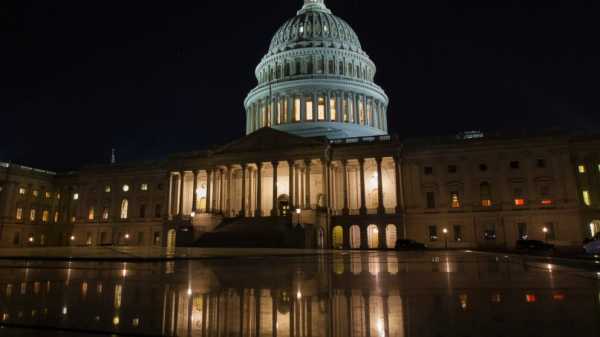
Save this storySave this storySave this storySave this story
On Thursday, the third and final season of “Just Like That,” the “Sex and the City” sequel, wrapped. The episode takes place on Thanksgiving, but the main characters don’t celebrate together, with only Carrie joining Miranda on the day when her adult son Brady, expecting a baby with a woman he barely knows, takes on the responsibility of cooking the turkey for his makeshift family for the first time. In the original series, the core four — Carrie, Charlotte, Miranda, and Samantha — often gathered as a family of choice. In the finale, the absence of Charlotte, Lisa, and Seema from the celebration adds a sad undertone to Carrie’s seemingly courageous embrace of her single status after losing Big and several failed romances. Her open fate is a sharp turn from the happy ending of “Sex and the City,” in which Big flies to Paris to bring a miserable Carrie back to New York. However, this theoretically bolder ending comes with one final disappointment for viewers – it's hard to imagine the show has any real “fans” – a series of short scenes with rushed and unsatisfying resolutions that drain almost every character of meaning.
None of the Sex and the City sequels – two films, the prequel The Carrie Diaries, and Just Like That – have been able to capture the magic of the original: a genuine cultural phenomenon and one of the most influential TV shows of all time. Many subsequent shows have been compared to it, but even in copycat Hollywood, Just Like That has spawned surprisingly few imitators. The show stands apart, especially in one respect that is key to its appeal: its unabashed, unreflective ambition. Sex and the City, which aired from 1998 to 2004, chronicled the rise of New York City as an elite vacation spot – and the collapse of that dream. The TV landscape, and the culture at large, have changed so significantly since its release that Just Like That was arguably all but doomed to failure.
Sex and the City was hardly the first TV show to put female friendship front and center, or even the first to show how women could be each other’s rock. (On Friends, a desperate Rachel moves into Monica’s rent-controlled apartment after running away from her wedding, and on The Golden Girls, Blanche’s Miami home was a refuge for her often-financially struggling neighbors.) Carrie and her gang paved the way for many other buddy comedies, but, especially in the years after the Great Recession, new characters settled for modest trappings or navigated class differences in their friendships. Girls (2012) boldly dressed its title character in clunky clothes; Hannah’s clunky outfits reflected her scattered existence. On Broad City (2014), one of the two slackers lives not in Brooklyn, but in Queens. In Insecure (2016), lawyer Molly expresses frustration with her best friend Issa’s perceived lack of ambition, which in turn is accompanied by her modest salary. Part of this reduction in scale is because the characters were generally younger and wealthier than those on Sex and the City. But it’s also because television’s then-burgeoning interest in greater authenticity had to take economic realities into account.
Meanwhile, shows that sought to perpetuate a vision of glossy, industry-driven publishing—airing the fantasy of Carrie’s $4.50-a-word rate at Vogue—have quickly earned a reputation for being loathsome to watch. The Bold Type (2017), which centers on three twenty-somethings working at a Cosmopolitan-style monthly publication, has become a favorite target of criticism among real-life media workers for its dated depictions of the magazine’s inner workings. Emily in Paris (2020), created by Darren Star, who also created Sex and the City, is more in tune with current digital content-making trends, showing Emily growing an expat’s personal Instagram account one post at a time while working her nine-to-five marketing job. The series never aspires to be anything more than luxury fluff, but it’s consistently criticized for its lack of realism. Perhaps this sweet fantasy is harder to swallow now because it’s so easy to find apartment listings, salary data, and retail prices and do the math yourself—a Google-centric approach that was far less common in the heyday of Spectrum Analysis. Or maybe it’s because, in our time of extreme inequality, wealth porn is often inextricably tied to class divisions.
These days, TV's equivalent of Manolo Blahnik — sophisticated, beautiful, sickly — is the prestige soap opera about penny-pinching dimes. Big Little Lies (2017), Succession
Sourse: newyorker.com






